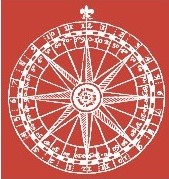Identity, Architecture, and Spirituality: The Ursulines of Bordeaux Decorate a Chapel
This article examines the Ursuline community in Bordeaux, France between 1606 and 1625. It integrates the community’s social and institutional history with an analysis of their convent’s architecture and devotional practices, an approach that has…
Listée dans Article | publication par groupe Iter Community
Version 1.0 - publiée le 26 Aug 2025
Sous licence Creative Commons BY-NC 4.0
Description
This article examines the Ursuline community in Bordeaux, France between 1606 and 1625. It integrates the community’s social and institutional history with an analysis of their convent’s architecture and devotional practices, an approach that has not until now been taken for women’s teaching orders in France. In 1608 the Ursulines shifted from a secular congregation to a formal religious order. They changed in reaction to community criticism as well as in response to the need for a quiet space in which to practise their religious devotions. After receiving official papal approval in 1618, they decorated their chapel and wrote devotional guides. An examination of their chapel as a public representation of the community’s identity, and of their guides, illustrates the adjustments the Ursulines underwent and the institutionalization of their devotional practices. These transformations enabled the Ursulines to flourish and to play a central role in Catholic reform in Bordeaux and its surrounding regions.
Citer ce travail
Les chercheurs doivent citer ce travail comme suit :
Tags
Notes
Original publication: Myhr, Mity. "Identity, Architecture, and Spirituality: The Ursulines of Bordeaux Decorate a Chapel." Renaissance and Reformation 42 (2): 2019. 7-50. DOI: 10.7202/1065124ar. This material has been re-published in an unmodified form on the Canadian HSS Commons with the permission of Iter Canada / Renaissance and Reformation. Copyright © the author(s). Their work is distributed by Renaissance and Reformation under a Creative Commons Attribution-NonCommercial 4.0 International License. For details, see https://creativecommons.org/licenses/.
Aperçu de la publication
Iter Community
This publication belongs to the Iter Community group.
When watching a publication, you will be notified when a new version is released.
